Key takeaways:
- Multi-signature wallets enhance security by requiring multiple private keys for transaction approval, thus reducing the risk of unauthorized access.
- The collaborative nature of multi-signature wallets fosters accountability and trust among participants in financial decisions.
- Setting up a multi-signature wallet involves selecting a suitable platform, defining the signature threshold, and testing with small transactions for confidence.
- Users often experience a learning curve with different wallet interfaces, but overcoming this can deepen their understanding of blockchain technology.

Understanding multi-signature wallets
Multi-signature wallets, often referred to as multi-sig wallets, require multiple private keys to authorize a transaction. This means that even if one party’s key is compromised, the funds remain secure, as the attacker would still need the other keys to access the wallet. Isn’t it reassuring to know that your assets can be safeguarded by a collective approval process?
From my experience, using a multi-signature wallet feels like a shared responsibility within a community, much like co-managing a family account. Once, during a group investment, we decided to use a multi-sig wallet, requiring three out of five signatures for any withdrawal. It was a wonderful feeling to know that we all had a say in our collective finances, which added a layer of trust to our collaboration.
The emotional weight of security is palpable when it comes to managing funds. Have you ever felt that rush of anxiety before making a significant transaction? With multi-signature wallets, that anxiety diminishes considerably since multiple approvals are needed, creating a safety net. It’s like having a group of trusted partners watching over your investments, and it truly enhances the peace of mind that every investor craves.
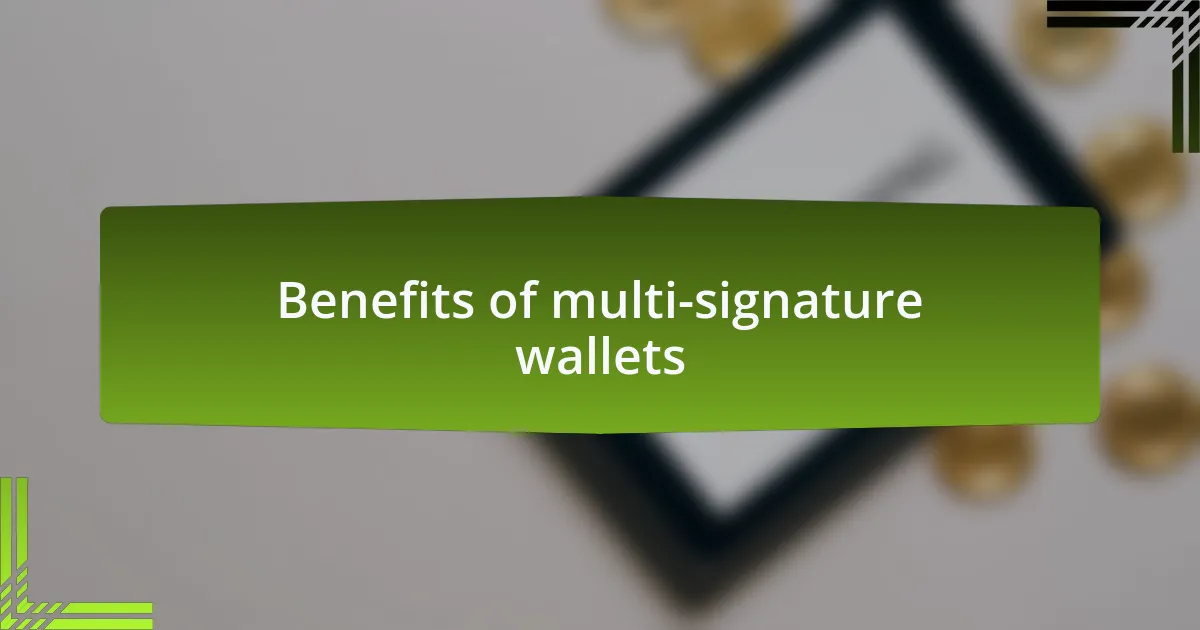
Benefits of multi-signature wallets
There’s a distinct advantage to employing multi-signature wallets—they significantly boost security. I recall a time a friend lost their funds due to a phishing attack, which served as a stark reminder of the vulnerabilities we face in the digital space. With multi-signature wallets, the risk is mitigated, as hackers would need multiple keys, making unauthorized access much less likely. Isn’t it reassuring to think that you could enjoy transaction security even amidst the ever-evolving threat landscape?
Another compelling benefit lies in its collaborative nature. In one of my investment groups, we adopted a multi-signature wallet that required two out of three signatures for any transaction. This not only fostered discussion around investment decisions but also empowered each member to contribute, creating a sense of ownership. Have you ever felt that collaborative energy when everyone is on board? It really transforms how we view responsibility and trust in joint ventures.
Additionally, the regulatory benefits can be a game-changer. Using a multi-signature wallet can help with compliance by creating a transparent audit trail. When I was involved in a project that required strict adherence to financial regulations, the multi-signature option made it easier to track who approved what, reducing the risk of disputes. Isn’t it comforting to know that such accountability exists, making everyone answerable for their transactions?
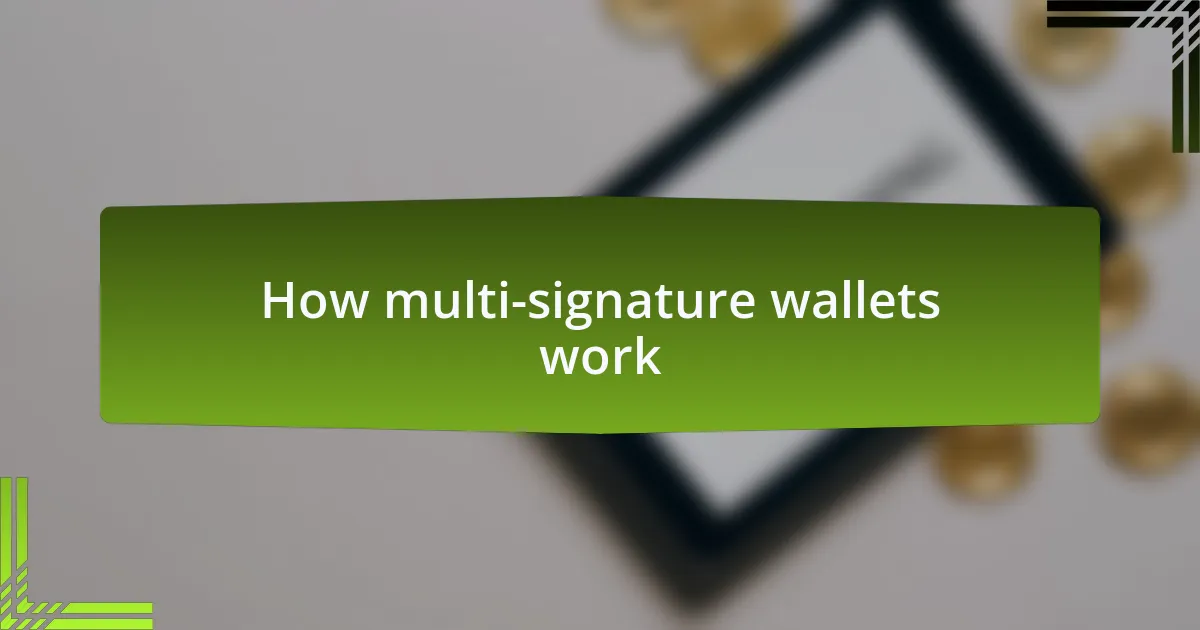
How multi-signature wallets work
When it comes to how multi-signature wallets work, the principle revolves around requiring multiple signatures for a transaction to be completed. Think of it like needing a group of friends to agree before you can take out money from a shared vault. I remember the first time I set one up; it was almost like conducting a small heist—everyone had to approve, which made me feel not just secure, but part of something larger.
In a typical setup, each participant holds a private key, and a predefined number of those keys, known as the threshold, must sign off for a transaction to proceed. This added layer of security provides a sense of relief; I still recall how nervous I was sending a large amount to a new venture alone, but with a multi-signature wallet requiring my partner’s approval, I felt bolstered. Has your trust ever been shaken in a solo transaction?
Moreover, these wallets function on blockchain technology, ensuring that each approve action is recorded transparently and immutably. This transparency promotes trust, which is crucial in the often opaque world of cryptocurrency. I once hesitated to invest because I didn’t know who had access to the funds. Once I understood how these wallets could be structured, I felt emboldened to dive in, all thanks to the clarity provided by multi-signature systems. How empowering is it to know that you can control access together with trusted partners?
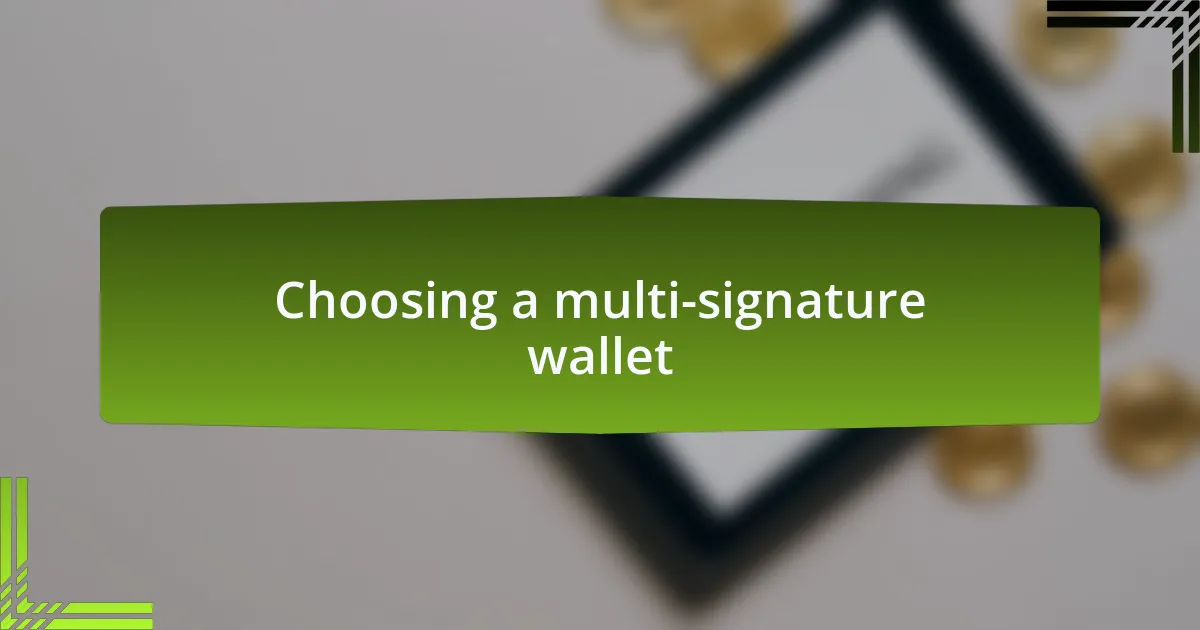
Choosing a multi-signature wallet
Choosing the right multi-signature wallet requires careful consideration of your specific needs and the level of security you require. I remember my first decision-making process, weighing factors like the reputation of the wallet provider against the features offered. Isn’t it interesting how a tool can feel both empowering and daunting at the same time?
It’s also vital to think about the threshold you’d like to set. Personally, I’ve experimented with different configurations, and I found that balancing convenience with security is key. What’s the point of having a fortress if no one can get in when they need to? Each configuration can significantly impact how fluidly you handle transactions.
Lastly, don’t overlook the usability of the wallet interface. I’ve had my fair share of confusing wallets, and an intuitive design can save you a lot of headaches. Have you ever felt frustrated trying to navigate a complex app? Choosing a wallet that feels familiar can not only ease your experience but also enhance your confidence in managing your assets.
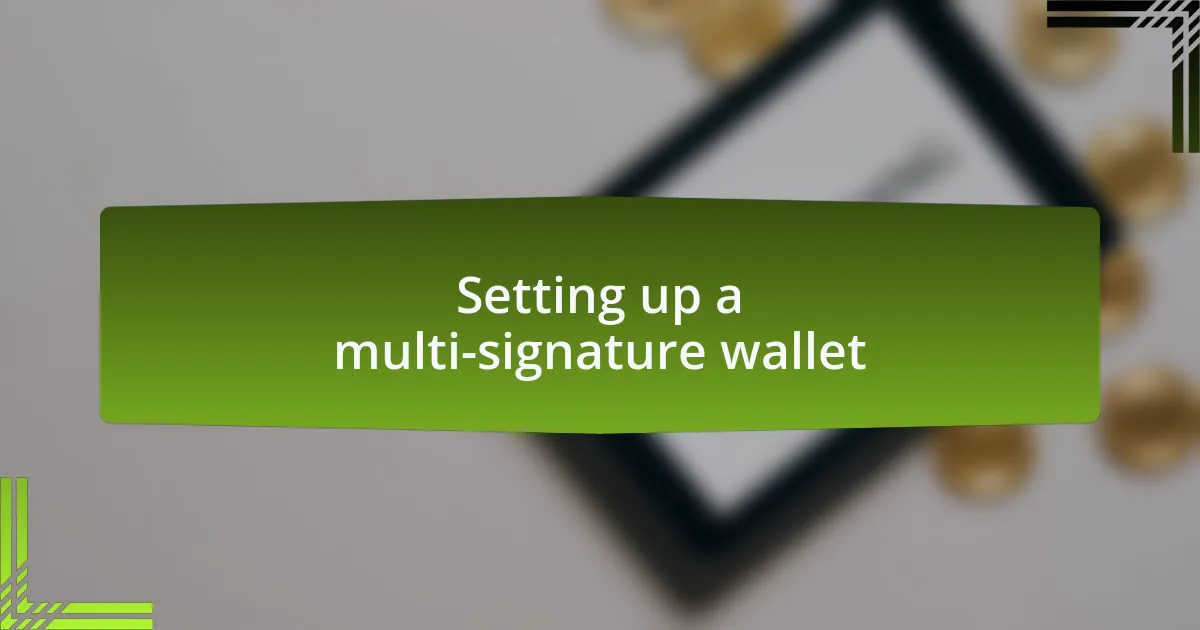
Setting up a multi-signature wallet
Setting up a multi-signature wallet can seem complicated at first, but it’s really about following a few straightforward steps. From my experience, I found it helpful to start by selecting the right platform that supports multi-signature features. Have you ever felt overwhelmed by options? Focusing on user reviews and setup guides made the process much clearer for me.
Once you’ve chosen your wallet, you’ll need to define the number of signatures required for transactions. This step is crucial because it determines how many parties need to approve a transaction before it goes through. I remember the first time I set up a threshold; it was exciting to realize I could create a safety net for my assets. Did you know that having too many signatures can slow down transaction approval? It’s a delicate balance between security and efficiency.
After configuring the signatures, I highly recommend testing out the wallet with small transactions. I took my time to send minimal amounts initially, just to get a feel for how everything worked. It’s like a rehearsal before the main event. Have you considered how a practice run can build your confidence? By familiarizing yourself with the wallet, you not only reduce anxiety but also ensure a smooth experience when managing larger amounts in the future.
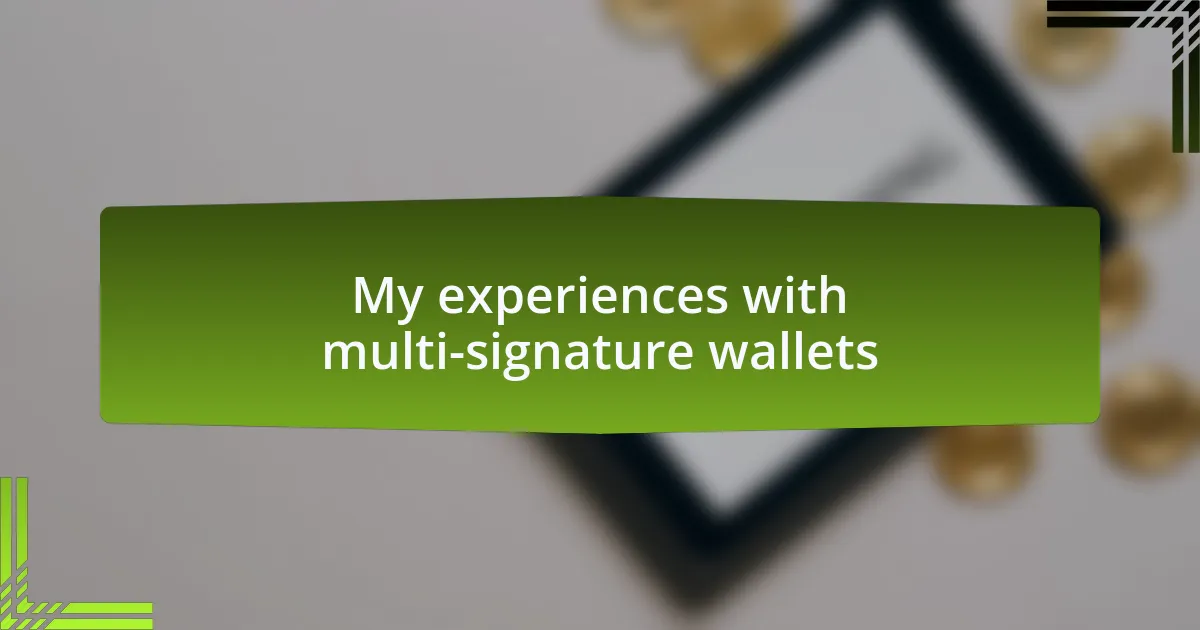
My experiences with multi-signature wallets
My Experiences with Multi-Signature Wallets
I remember the first transaction I executed using a multi-signature wallet; it felt like stepping into a new realm of security. The thrill of knowing that multiple approvals were needed gave me a sense of control I hadn’t felt before. Isn’t it reassuring to know that your assets are protected by a collective decision rather than just one point of failure?
There was one moment that stands out vividly in my memory—it was during a group project where we pooled resources for an investment. At first, coordinating among all parties felt cumbersome, but once we got used to the multi-signature process, it transformed our collaboration. Have you ever experienced how teamwork can elevate not just trust but also efficiency? These wallets truly made us feel more like a united front against potential threats.
One challenge I encountered was the learning curve with the different interfaces of various wallets. Initially, I felt frustrated trying to remember which wallet required what for each transaction. However, as I navigated through these hurdles, I realized the value of the process; it deepened my understanding of blockchain technology. In hindsight, how many times have you pushed through frustration to eventually find clarity? That journey taught me more than just how to use a wallet—it enriched my overall cryptocurrency experience.